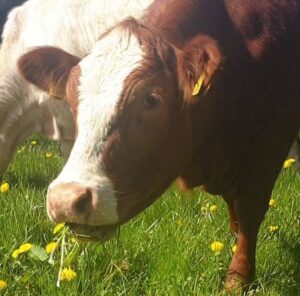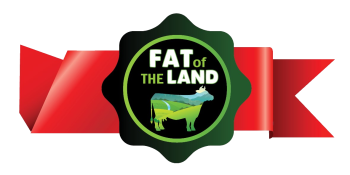
Grass-fed Beef what’s it all about?
People are demanding higher standards for their food, specifically beef. If I had to summarize, I’d say they have 3 areas where they want improvements, Nutrient density, Environment/Animal welfare, Trust and transparency.
Most people going about their daily lives don’t really take time to consider the differences in how cattle are raised. Certainly, in Ireland the perception is that they’re all roaming around in a field to some degree or other. I’d say that’s mostly true, but the distinction makes all the difference.
Cattle are, after all, ruminant animals; they have Four stomachs and are designed to make their living on pasture which is an energy poor vegetation type which is otherwise inedible to anything else.
However, in man’s pursuance of profit Cattle are fed energy rich feeds like grain or soy to make them grow bigger faster. Removing these animals from their habitat has consequent impact on their meat as well as their environment both locally and globally.
The push back to this has been from individuals and families seeking out more natural and environmentally appropriate produce. Hence the emergence of Grass-fed Beef as a premium product that have educated consumers seeking it out.
So, what is it that these customers are looking for in Grass-fed Beef?
Nutrient Density
The research shows that there is a slightly lower fat content in Grass-fed compared to non Grass-fed However that fat is also contains much more omega3’s, specifically DHA’s. As well as phytonutrients such as Beta Carotene which is a precursor to vitamin A(Retinol)
DHA’s and Beta Carotene are vital to eye and heart health in fact the only meat with higher levels than Grass-fed beef is Marine life i.e., oily fish.
Grass-fed Beef even looks different from Grain-fed. The meat is more of a cherry colour, closer to venison than paler Grain fed meat. The Fat has a more yellow tinge to it. Its thought that phytonutrients from the grass are responsible for the colour differences. In general people seem to trust the arrangement of phytonutrients according to the pattern of nature is more reliable and worthy than that tinkered with by man.
So, if you’re serious about your diet your children’s diet you should be serious about your “preys” diet. To make sure it’s a s natural as possible.
Happy Animals/Environment
Some people take very seriously their responsibility for caring for those animals upon whom we depend for life. This, in a world of professional specialization, makes it wise to ensure that the paradigm that produces these animals adheres as close as is possible to their co-evolved habitat. Selecting Grass-fed Beef, by itself maybe not a cure-all, but is a very high leverage control point. One that ensures the most natural possible life for the Animal and therefore most likely give the greatest assurance that the animals live contented lives.
A little side bar(for my 13year old Daughter). I’m often asked how I can kill and eat cattle if I say I love them? Ok on the face of it I understand. However, the farmers relationship is with the herd and not the individual animal. The farmer is the one making the future for the Cows Kin. No farmer, no cow! (In fact, no customer no cow)
In addition to that, never have consumers been so conscious of the environment, both locally and globally.
Cattle grazing forage on pasture sequesters 8-10times the amount of carbon they emit through enteric digestions. Why because nature designed it that way. Among other mechanisms the pasture is full of methanotrophs (organisms that eat Methane)that depend on those cow burps. Its worth noting that Methanatrophs don’t live on concrete where most cattle are finished.
To simplify it if you want more green grassy pastures in your environment you need to eat more animals that eat that grass on the pasture and the farmers will keep giving you what you want.
Market Forces and Trust.
Trust, is what you as a customer are being asked to do with every purchase. So how do you currently do Trust in a “scale environment” (supermarkets etc)? Labels and trademarks? That seems to be the way but is it the only way? Is it even an adequate way for a consumer who wants to make important distinctions like;?
Nutrient density,
Environment/ Happy Animals
Trust
The best way is like the chef, know the producer. What does he stand for what are the distinctions he likes to make in his selections?
That’s what we offer at Fat of the land. We give you a link directly to the farm so you’ll know exactly what goes into producing your beef and just as importantly what are the environmental outputs, are the positive or negative.
I’ve described 5 factors I take into consideration in the production of my Grass-fed beef. I think they’re all pretty important and only one of them is included in the National Grass-fed Beef Standard” S
If you’d like to receive a copy of the 5 distinctions that make for the best Grass-fed beef sign up for our newsletter
->
